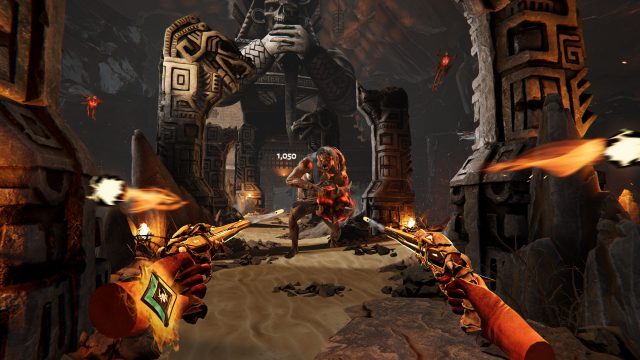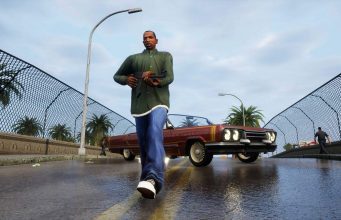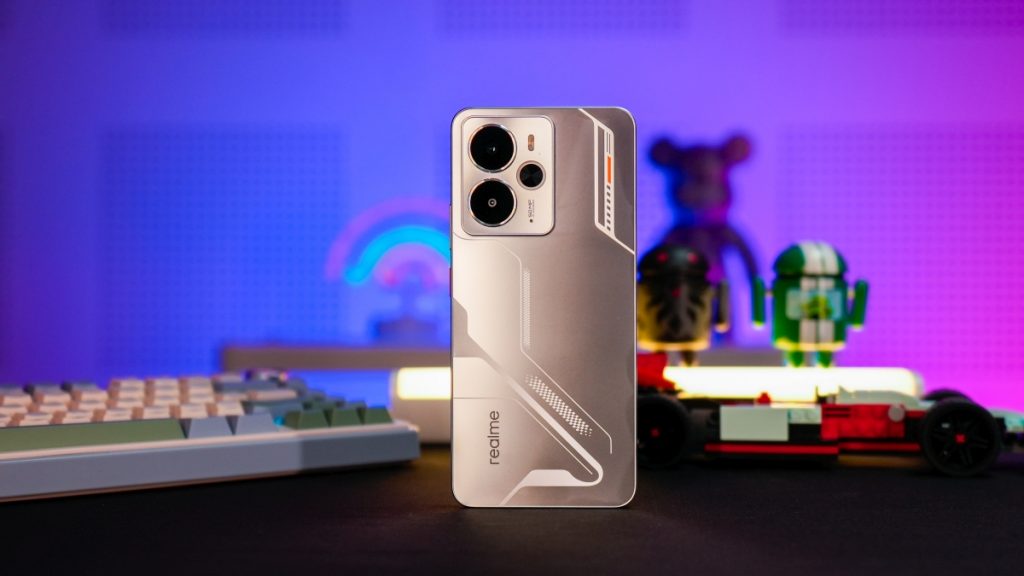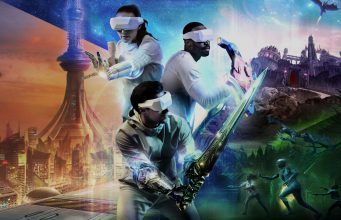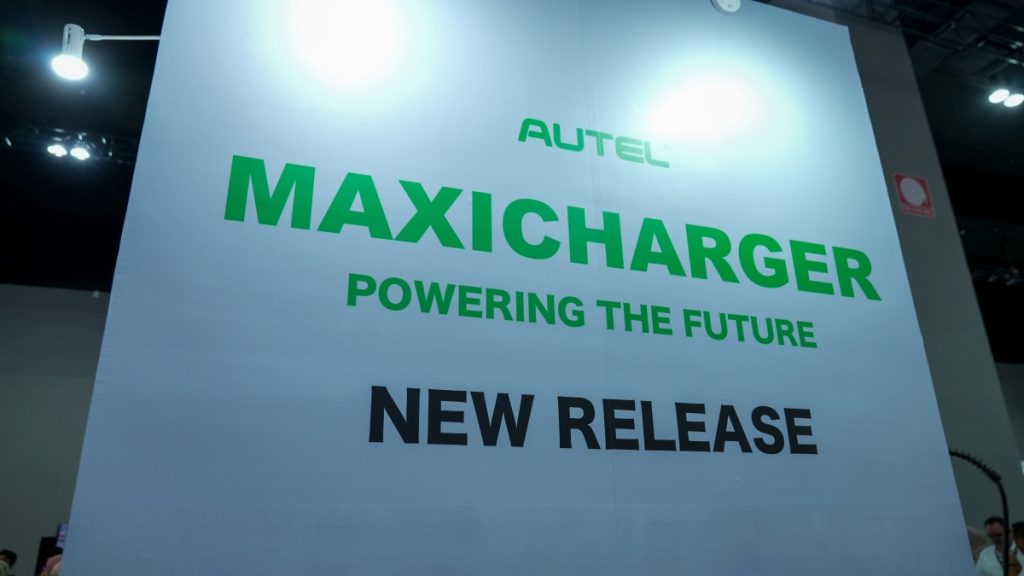Metal: Hellsinger VR is a very unique flatscreen game, and also has the potential to be a very unique VR game. But it’s going to take a little tuning up before launch to really make it sing.
If you’ve never played the flatscreen version of Metal: Hellsinger, it’s probably unlike anything you’ve played before. It’s a fast-paced FPS game that asks you to shoot to the beat. Doing so nets you more damage, more points, and more intense music. It feels completely different from your usual shooter, in way that gets you into an awesome flow.
That flow state can be even more fun with the all-encompassing immersion of VR, and to that end, the idea to build a separate VR version of the game—aptly called Metal: Hellsinger VR—is well-premised. But as ever, porting mechanics that weren’t originally made for VR requires serious attention to detail and polish to make things feel just right.
Metal: Hellsinger VR is coming to Quest, PC VR, and PSVR 2 later this year. I played the newly released PC VR demo, and while the game’s potential to shine in VR is clear, it’s falling just a few notes short of a perfect arrangement. However, this isn’t because the mechanics aren’t well suited for VR, but simply because they need that ‘last 10%’ of polish to really sing. Because nothing is fundamentally wrong with the game, I have real hope that they can tune things up by the time it reaches release.
There’s little doubt that you’ll find yourself unconsciously bopping your head to the beat as you play Metal: Hellsinger VR. The heavy metal soundtrack is solid, and physically aiming your guns and pulling the trigger amplifies the feeling of being totally in tune with the beat.
Gameplay is unabashedly fast-paced, but the developers have built in a decent set of VR comfort options. Teleport movement is unfortunately not available, though I think the developers are warranted in not including it—the pace, flow, and combat balance of the game just wouldn’t be right with teleport. And although the game defaults to smooth turning (not the best idea), snap turning is available, as well as peripheral blinders. Using a heavy blinder managed to keep me comfortable for at least an hour of play, despite all the fast stick movement and double jumping.
The bones here are good, but it’s the essence of the gameplay—and how it feels in VR—that needs to find the right key.
For instance, pumping the shotgun. By default the game asks you to manually pump the shotgun, which should feel absolutely awesome, right on the beat, between shots. But the particular way the pump gesture is detected—and the way the game handles two-handed weapon aiming—doesn’t feel quite right. In the end it often feels frustrating to pump the shotgun, perhaps due to the ‘correct’ window of timing being too tight. Quantizing the pump sound and timing a bit could be one solution to making this feel right.
The developers ostensibly realize the shotgun doesn’t feel quite right, because they included an option to disable manual pumping. As much as I wanted the feeling of pumping the shotgun on my own, disabling it turned out to be a more enjoyable experience.
Reloading the shotgun has a similar issue. In theory, it should be perfect for VR: when you press the reload button the break-action opens and then you’re asked to flick the shotgun closed on the right beat to successfully reload.
But something in the way the ‘flick closed’ gesture is implemented makes it very difficult to time correctly. This is likely a result of the developers having a particular motion in mind for the flicking action, which might not be quite the same way that other people tend to do it.
For instance, do you flick ‘up’? Do you flick ‘down then up’? Must it be a sudden motion? A smooth motion? If you test this with 10 different people, they’ll probably all do it in a slightly different way. And further, at what point exactly in the motion does the game consider the ‘moment’ of the reload? Without communicating this clearly, it’s hard for the player to find the right timing.
This is the kind of thing that requires serious polish in VR to feel fun and fluid. But when it doesn’t quite get there, it winds up feeling tedious and frustrating.
I probably spent 10 minutes just sitting in a corner trying to practice the shotgun reload flick. After a while I started to get the hang of it, but it still feels more tedious than gratifying, and frustrating when you don’t land it even when you felt like you had the right timing.
Another weapon in the game—the dual-wielded pistols—feels similar. Again, they have a reload gesture that in theory should feel awesome in VR (flick your guns inward so the chambers swing into the gun). But the motion required and the timing window never feel quite intuitive.
And then there’s the ‘Slaughter’ mechanic—a satisfying finishing move that crushes weakened enemies to the beat. Or it could be satisfying… with the essential VR polish.
In the fantasy of the game, the Slaughter mechanic has you dash toward your victim and chop them in half with a sword, perfectly on the beat.
But in Metal: Hellsinger VR you just press a button and it all happens automatically.
I can’t tell you how incredibly, deliciously satisfying this mechanic could be with just a little more VR-native design put into it. It’s so close… I can feel it.
Instead of simply pressing a button, a ‘pulling’ gesture (as if yanking yourself toward the enemy with an invisible chain) would be a great start to involving the player’s body in the action. And to really make this mechanic feel amazing, asking the player to actually swing the sword at the enemy would make for an incredibly satisfying finishing move.
You can probably imagine it in your mind as one continuous, satisfying motion: reach out with your right hand toward the target and hold the grip button to ‘grab’ them. Yank your hand to pull yourself to them in a dash. Then—with your hand already drawn back from the ‘pull’—the sword appears in your hand and you swing to cleave through the enemy. All to the beat.
The pieces already exist to make Metal: Hellsinger VR an awesome VR game. But as is always the case with VR ports… it’s all in the details.
There’s at least some hope the developers can close this ‘VR gap’ before the game launches. For what it’s worth, I appreciate their commitment to making the game feel at home in VR, even if it wasn’t designed for it in the first place.
Metal: Hellsinger VR has an all new hub area where players can select levels, equip their loadout, and see the game’s narrative sequences, all in an immersive way. They even converted the game’s Settings pages into books that sit on a shelf. They’re a little cumbersome to use at present, but you can tell the developers have their heart in the right place when it comes to trying to make the game feel at home in VR.
The closest thing to Metal: Hellsinger VR that’s actually a native VR game is Pistol Whip. While they’re different games striving for different gameplay, the ‘ease of play’ that can be felt in Pistol Whip is a great bar for Metal: Hellsinger VR to aim for, and one that I hope it can reach.

